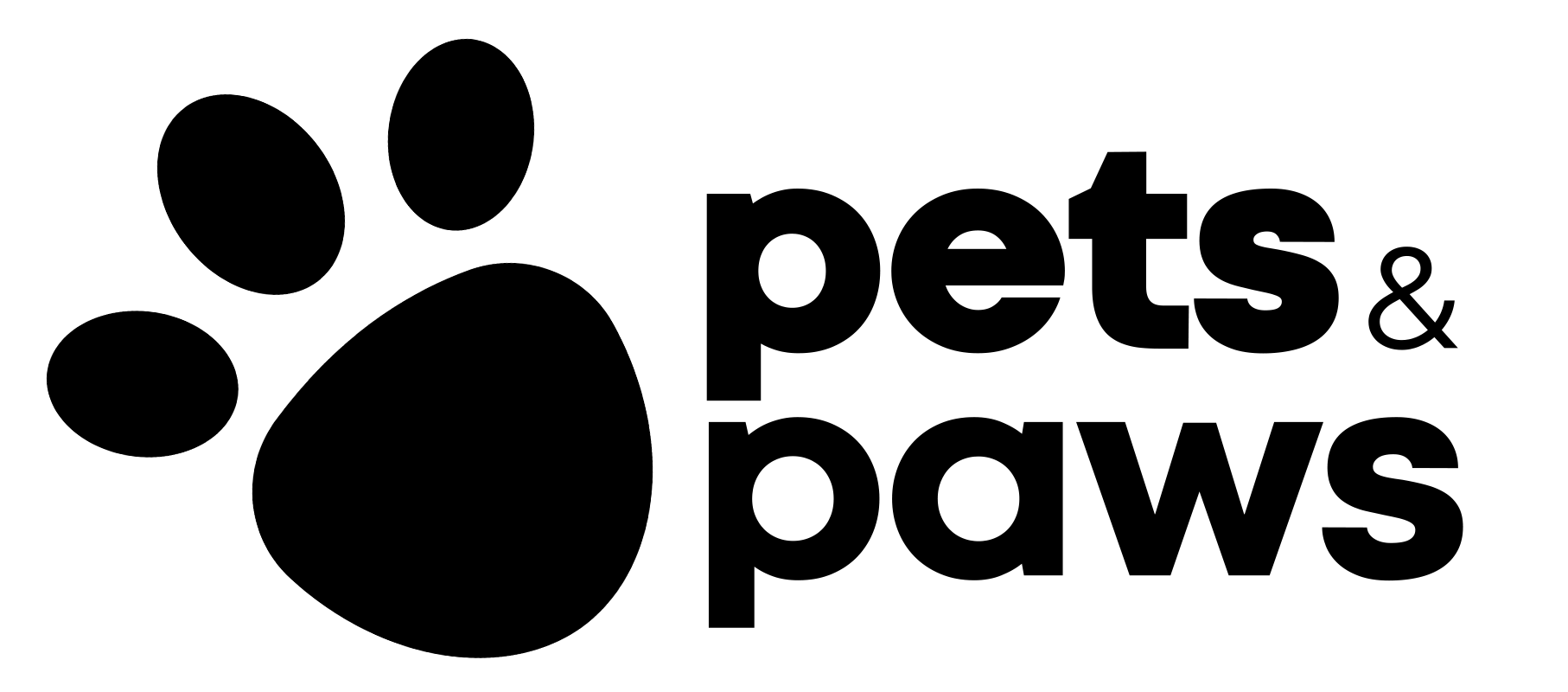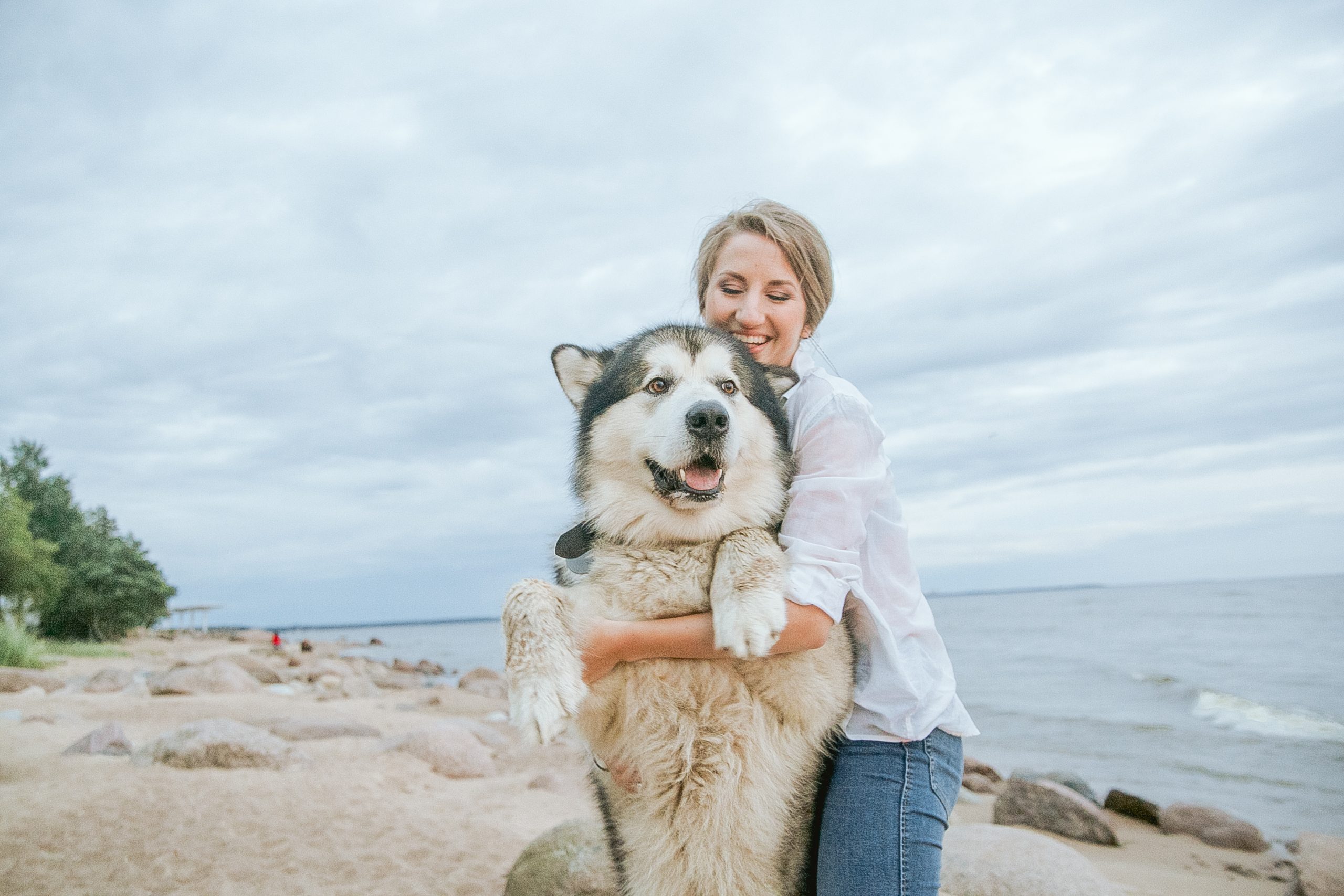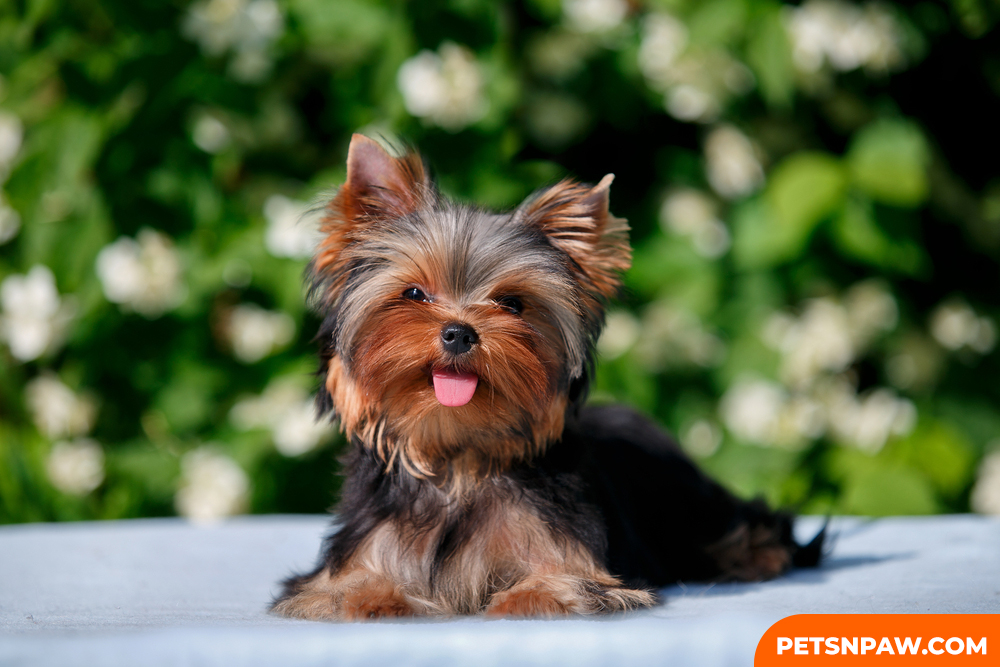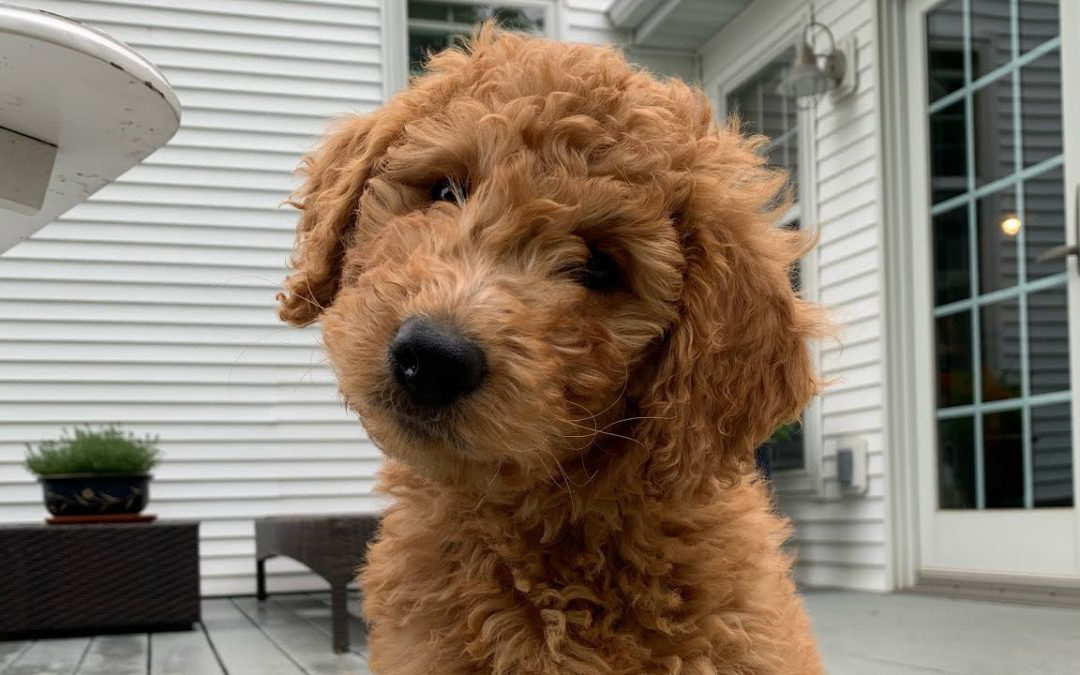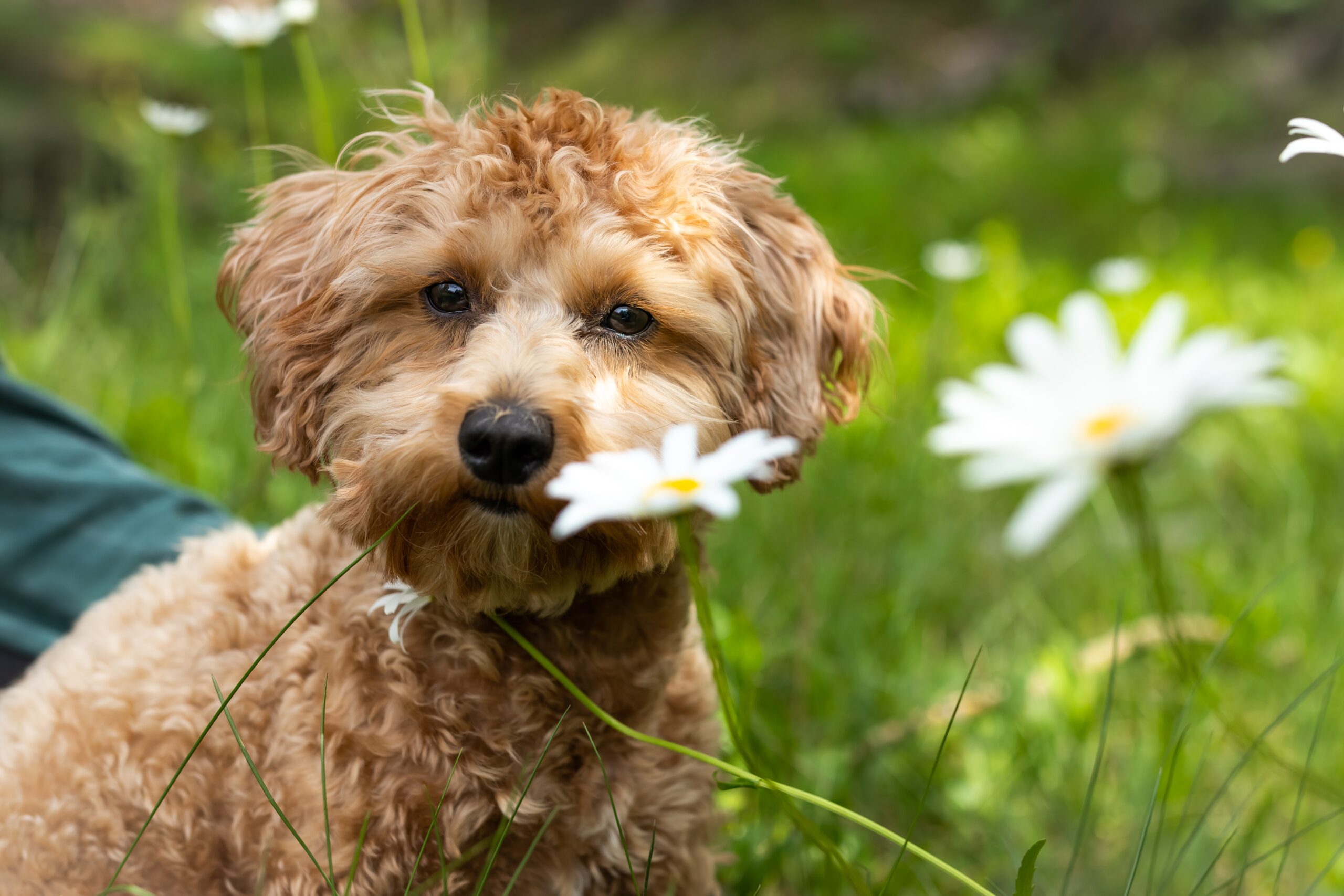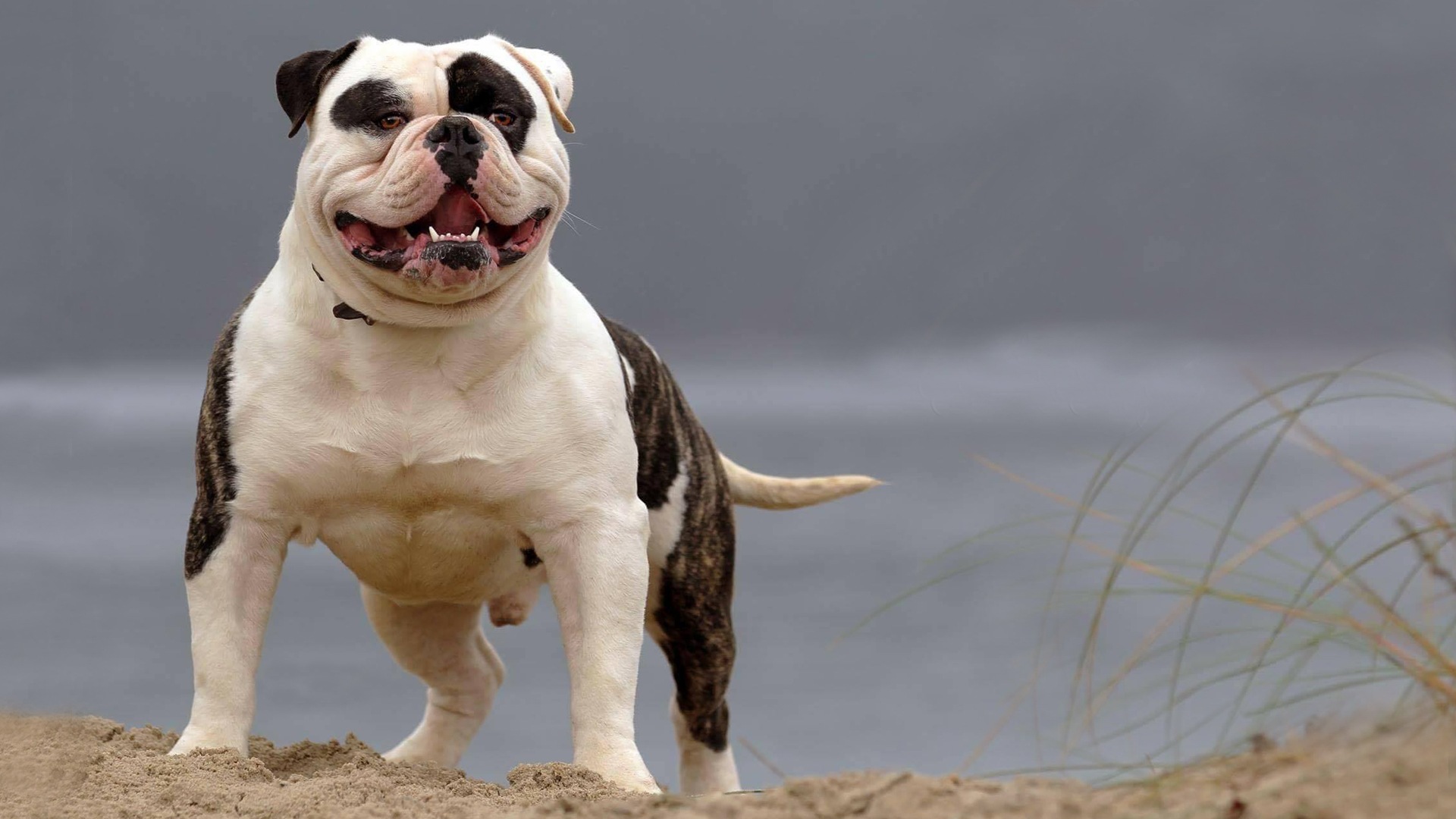Huskies have been popular pets and working dogs for centuries, and it was recognized as a breed by the AKC in 1930, but did you know that there are actually multiple types of this beloved canine companion? some of them are Purebred and some are mixbred huskies.
- How Many Husky Types Are There?
- Purebred Husky with Pictures | Types and Name of breeds
- Mixbred Husky with Pictures | Types and Name of breeds
- What is the Husky Breed Basically?
- What are the different types of huskies that can be kept as pets?
- Different Types of Purebred huskies
- 1. Siberian Husky
- 2. Sakhalin Husky
- 3. Samoyed
- 4. Agouti Husky
- 5. Alaskan Malamute
- 6. White Husky
- 7. Labrador Husky (Huskador)
- 8. Chinook Dog
- 9. American Eskimo Dog (Eskie)
- 10. Canadian Eskimo Dog (Canadian Inuit Dog)
- Canadian Eskimo Dog Personality and traits:
- 11. Alaskan Klee Kai
- 12.MacKenzie (River Husky)
- Different Types of Mixbred Huskies
- Are huskies dangerous?
- What is the rarest breed of Husky?
While the Siberian and Alaskan Husky are the most well-known breeds, the rare Utonagan is gaining in popularity. Read on to learn more about their unique characteristics, history, and care needs.
The husky, without a doubt, is the most sought-after breed of dog in the world, with numerous varieties that are all adored and admired by dog enthusiasts. Even a cat-lover, on the other hand, can’t help but give these canines the Coochie Coochie Coo treatment.
Although husky breed dogs are loyal, playful, and friendly, the most enjoyable aspect of owning one is the fact that there are so many different types of husky breed dogs to choose from.
[the_ad id="1870"]
This blog tells you about each bit of information involving the 16 types of huskies, their origin, temperament,behavior, physical attributes, and of course a lot of pictures.
So, without wasting a second, let’s move to discuss the varieties of husky specie:
Husky dogs are divided into two types, the purebred husky dogs and husky mix breeds.
Purebred Husky with Pictures | Types and Name of breeds
Purebred huskies are dogs that have purebred parents from the same breed and are recognized by international and American dog organizations such as the American Kennel Club (AKC).
When it comes to purebred types of huskies, we find:
- Siberian Husky
- Sakhalin Husky
- Samoyed
- Agouti Husky
- Alaskan Malamute
- White Husky
- Labrador Husky (Haskador)
- Chinook
- American Eskimo Dog (Eskie)
- Canadian Eskimo Dog (Canadian Inuit Dog)
- Alaskan Klee Kai
- MacKenzie (River Husky)
Mixbred Husky with Pictures | Types and Name of breeds
A mix-bred husky is a husky that has one parent who is from the husky class and one who is from a different husky breed or animal specie, such as wolves, and is a hybrid of the two.
Sometimes, huskies are crossed with other breeds to create toy dogs or cup dogs. That’s why some husky clubs such as the US Husky club and the UK husky club do not accept mixed-bred huskies because of their appearance.
However, Some of these husky mix puppies have been given the following names:
[wptb id=1429]
What is the Husky Breed Basically?
Basically, the husky name is taken from the Inupiaq people, who used this term to refer to their dogs, which they employed for pulling carts in their villages. So, in essence, a husky is a dog that pulls a sled.
In order to account for this, the issue of “huskies” is a large one, with numerous distinct breeds of dogs that are used for a variety of tasks such as carting and pulling sleds.

In reality, all of the husky breeds are native to mountainous and snowy environments. They are used for a variety of purposes, including sledding individuals and transporting products from one location to another.
However, these canines are now in high demand not only for this reason, but also as household pets for people to keep in their homes.
What are the different types of huskies that can be kept as pets?
Huskies are large and hefty dogs, due to this thing, they are considered less like a family dog, and more demanded as watchdogs.
However, having outclassed abilities of intelligence, friendliness, and love, they are crossed with smaller sized breeds, and miniature husky pups are created.
These small dogs are excellent to keep in the homes as pets, and they become worthy additions in the families.
All with this, training is a must for husky dogs before making them part of the family and home. They require to teach some manners.
Different Types of Purebred huskies
There are several types of pure-bred huskies, each with its own unique characteristics and history. Here are some of the most common types:
1. Siberian Husky
Siberian huskies are the most sought-after and well-known breed of sled dogs in the world.
- Height: 20 to 24 inches (51 to 61 Cm)
- Male dog: 21-23.5 inches (53 to 60 Cm)
- Female dog : 20-22 inches (51 to 56 Cm)
- Weight: 35 to 60 pounds (16 to 27 Kg)
- Male dog: 45-60 pounds (22 to 27 Kg)
- Female dog: 30 to 35 pounds (14 to 12 Kg)
- Lifespan: 12-14 years

Siberian Husky Traits:
Some prominent traits of huskies belonging to Siberia are:
- Smart
- Enhanced physical appearance
- Hair shedding
- Possessiveness
The Siberian husky is the most demanding breed of huskies, ranking 14th out of 194 dogs in terms of training and temperament. He is the most clever, powerful, and loyal dog on the planet, and he has a common ancestry with wolves.
In fact, the Husky is not a wild animal at all, but rather a confident and polished breed of dog that can be taught to behave with very little but good training.
[the_ad id=”1870″]
2. Sakhalin Husky
- Breed type: Purebreed
- Lifespan: 12 to 14 years
- Size: large
- Weight: 60 t0 77 pounds (27 to 35 Kg)
- Male dog: 77 pounds or 35 Kg
- Female dog: 60 Pounds or 27 Kg

Sakhalin Husky Personality Traits:
Some prominent traits of huskies belonging to Sakhalin breed are:
-
- Intelligence
- Loyalty
- Friendliness
- Eats too much
- Love to eat tuna just like cats
Sakhalin is the Chinese breed of husky dogs, and they are also termed as Karafuto-Ken, Karafuto Dog. The Sakhalin Husky is not for everyone, as you may imagine. The happiness of this wonderful, extremely intelligent dog is dependent on a number of factors, including the presence of a master who is capable of dealing with his strong temperament.
A predator and hunter by nature, despite his beautiful traits as a life partner and his tremendous affection for humans, he will always be and remain a free dog at heart, regardless of his training.
This extremely rare, but yet exquisite breed was never brought outside of Japan’s boundaries. As a result, it is required to travel to Japan in order to uncover this magnificent specimen.
Sakhalin huskies are now an extinct breed, and very few breeders are left. Until 2011, only two dogs remained.
[the_ad id=”1870″]
3. Samoyed
The Samoyed is a beautiful and friendly breed of dog that originated in Siberia. They were originally bred to herd reindeer and pull sleds, and are known for their thick, fluffy white coat and adorable “smiling” expression.
- Height: 19 to 24 inches (48 to 61 Cm)
- Male Dog: 21-23.5 inches (53-60 Cm)
- Female Dog: 19-21 inches (48-53 Kg)
- Weight: 35 to 65 pounds (16 to 29 Kg)
- Male Dog: 45-65 pounds (20-29 Kg)
- Female Dog: 35-50 pounds (16-23 Kg)
- Lifespan: 12-14 years

This small dog is though short, however, as it shares husky parent hence termed as a type of husky dog.
Samoyed Traits:
Some personality traits of Samoyed dogs are:
- Tireless
- Powerful
- Agile
- Friendly like a brindle French
- Smiling face
- Impervious to cold
Being a little dog that is remarkable for its ability to pull sledges without difficulty, the Samoyed is highly common as a pet in cold regions, where it is used to convey both goods and people.
This dog can withstand even the most extreme weather conditions, such as temperatures below minus 60 degrees, without showing signs of distress.
Make no mistake about the small stature of these canines; the race is incredibly functioning and productive despite their small size. They are safe to take out for sleighing even when it is snowing heavily.
Although their smile is purely for cuteness’ sake, the upturned corners of their mouth prevent ice crystals from developing on their faces.
These dogs are not suitable for small apartments since they require a lot of exercise throughout the day in large yards and areas.
If you leave them alone in the little yards, they will become bored and may exhibit behavioral problems. They require entertainment, and being physically active is the best type of entertainment for them to have.
Samoyeds are fantastic pets; nevertheless, they need a larger living space and more active living circumstances to be happy.
[the_ad id=”1870″]
4. Agouti Husky
The Agouti Husky is a variation of the Siberian Husky breed, characterized by a unique coat coloration called “agouti.” Here are some general characteristics of the Agouti Husky:
- Height: 21-23.5 inches (53-60 cm)
Male: 21-23.5 inches (53-60 cm)
Female: 20-22 inches (51-56 cm) - Weight: 10 to 23 pounds (16 to 29 Kg)
Male: 45-60 pounds (20-27 kg)
Female: 35-50 pounds (16-23 kg) - Lifespan:12-14 years

Agouti Husky Personality and traits
Some personality traits of Agouti Husky are:
- Friendly and Social
- Active and Energetic
- Intelligent and Independent
- Strong-Willed
- Vocal (may howl, bark, or “talk” )
- Cold-Resistant
The Agouti Husky’s coat is typically a mixture of several different hair colors, including black, white, gray, and brown. The agouti pattern gives the coat a unique “wild” appearance. The coat is also thick and double-layered, which provides insulation in cold weather.
The Agouti Husky is generally a healthy breed, but can be prone to certain health issues such as hip dysplasia and eye problems. Regular veterinary check-ups and proper care can help minimize the risk of health problems.
Agouti Huskies are intelligent and quick learners, but can be independent and stubborn at times. Positive reinforcement training methods and early socialization are important to ensure a well-behaved and well-adjusted dog.
Overall, the Agouti Husky is a unique and fascinating breed with a variety of traits that make them a great companion for the right family. They require an experienced and active owner who can provide plenty of exercise, training, and socialization to ensure a happy and healthy dog.
[the_ad id=”1870″]
5. Alaskan Malamute
The Alaskan Malamute is a large and powerful working breed of dog that is known for its endurance, strength, and loyalty. Here are some characteristics that are commonly associated with the Alaskan Malamute:
- Height: 23 to 25 inches (58 to 64 Cm)
Male Dog: 25 inches or 64 Cm
Female Dog: 23 inches or 58 Cm - Weight: 75 to 85 pounds (34 to 39 kg)
Male Dog: 85 pounds or 39 Kg
Female Dog: 75 pounds or 34 Kg - Lifespan: 10-14 years

Alaskan malamute personality
Traits and behavior types of Alaskan Malamute are:
- Playful
- Great at kids-sitting
- Gentle
- He respects the owners a lot
- A mal chose you then you choose him
Along with being large in stature, Alaskan Malamutes are very good with children.
The Alaskan malamute is a species of husky dog that is very powerful. In addition to being an affectionate and lively dog, he is also extremely devoted to his family and enjoys playing with everyone, including children and other animals.
This husky type has a thick coat of fur on its body, which is a characteristic of the breed in general. It also has a robust bone structure, upright ears, and a hairy plumed tail to go with its large size.
This is the greatest portion of the body because its fuzzy coat is inherently waterproof and does not allow moisture to accumulate in the body, making Malamutes ideal sled dogs for cold environments.
Alaskan Malamute Vs. Siberian Husky:
When comparing Alaskan Malamutes to Siberian Huskies, the most noticeable differences are seen in their speed and strength.
Unlike Mals, Siberians are racers that can pull lighter loads over longer distances at a quicker rate than their Male counterparts. Aside from that, Malamutes are mixed-breed puppies, while huskies are purebred.
Mals are pack animals that need a strong leader at all times. When you keep them in your house, you become the leader of the pack, and they will not only hear you when you are working, but they will also want to play and snuggle with you once you finish.
[the_ad id=”1870″]
6. White Husky
White huskies share many characteristics with other husky breeds, but here are some specific traits that are commonly associated with white huskies:
- Height:
Males: 21-24 inches (53-61 cm)
Females: 20-22 inches (51-56 cm) - Weight:
Males: 45-60 pounds (20-27 kg)
Females: 35-50 pounds (16-23 kg) - Lifespan: 12-14 years

Agouti Husky Personality and traits
Some personality traits of Agouti Husky are:
- Shedding
- Active and Energetic
- Intelligent
- Independent
- Vocal (may howl, bark, or “talk” )
White huskies have a thick, double-layered coat that provides insulation and protection from the cold. The undercoat is soft and dense, while the topcoat is longer and coarser. This double coat sheds heavily twice a year.
Many white huskies have striking blue eyes, which is a result of a genetic trait that affects pigmentation.
White huskies are highly athletic and active dogs that require plenty of exercise to stay healthy and happy. They were originally bred as working dogs to pull sleds and transport goods across long distances.
known for their independent nature and may not be as eager to please their owners as other dog breeds. They require a firm and consistent training approach to prevent them from developing bad habits or becoming stubborn.
White huskies are generally friendly and social dogs that enjoy being around people and other dogs. They thrive in households with plenty of interaction and stimulation.
known for their vocalization and may howl, bark, or make other noises to communicate with their owners or other dogs.
White huskies are intelligent dogs that are quick learners and can be trained to do a variety of tasks, but they may also have a stubborn streak and require patience and persistence during training.
Active, intelligent, and independent dogs that make great pets for individuals and families who enjoy an active lifestyle. They have a thick double coat, which requires regular grooming, and can range in height and weight depending on their gender and genetics. White huskies have a lifespan of around 12 to 14 years, but may live longer with proper care and attention. If you’re considering a white husky as a pet, it’s important to do your research and ensure that you can provide them with the care and attention they need to thrive.
[the_ad id=”1870″]
7. Labrador Husky (Huskador)
By considering the name of Labrador Husky, people think it is a cross between Labrador retriever and Siberian husky; however, this is not true. It is a different breed.
- Height: 20 to 28 inches (51 to71 Cm)
- Weight: 60 to 100 pounds (27 to 45 kg)
- Lifespan: 10 to 13 years

Labrador Huskies Personality and traits:
Some essential characteristics of Huskador personality are:
- Wild
- Loyal
- Possessive
- Strong prey
You need to be a little careful while having this dog inside your house.
Huskador is not a crossbred dog; rather, it is a true purebred dog that came from a province in Canada. The Labrador Husky is referred to as a husky because it has many characteristics in common with husky dogs, including a thick coat and a calm disposition.
Though it has no link with wolves, he has a striking resemblance to the Siberian huskies, who were descended from wolves in their early years.
Because Labrador Huskies have a high hunting drive, they are not very friendly with small animals. If you have both small animals and Labradors in the same house, you need take care to keep them both safe.
Once again, like other husky breeds, the Labrador husky dog is energetic and need frequent activities and exercise to maintain his or her health.
In the higher portions of Canada, these dogs are employed in sledding for a variety of reasons, including hunting. Huskadors are another name for these individuals.
As a dog it may make an excellent pet; but proper training and a home with a large yard are essential. The dog is lively, similar to a shepadoodle, and is good at protecting you and your family from harm.
[the_ad id=”1870″]
8. Chinook Dog
Chinook dogs were born and brought up in New Hampshire as sled dogs; it is a rare breed of husky dogs.
- Height: 22 to 26 inches (56 to 66 Cm)
- Weight: 50-90 pounds (23-41 kg)
- Lifespan: 12-15 years

These chinook dogs are rare, a cross between farm dog and husky, make excellent pets with a calm, friendly, and relaxed attitude.
This breed comes with different kinds of dogs with a coat in colors like buff, tan, grey, and black. You can also find a fawn-colored skin.
Males of the breed are larger than females while looking almost similar. The dogs were made not just for sledding purposes but also to frighten other animals into coming at the farms. It means, chinook (dogs) can be excellent watchdogs.
Their eyes are also similar to huskies, dark and shaped like an almond. Chinooks love to play with children; they have a very cozy and calm attitude, love to stay with families.
They obey their owner too much and enjoy being in families. However, the breed is rare enough.
Chinook Personality and traits:
Some personality traits of Chinook :
- Friendly
- Keepers
- Calm
- Happy
- Cultured
Overall, the Chinook Dog is a rare and fascinating breed that makes an excellent family pet for those who are willing to provide them with plenty of exercise, mental stimulation, and love. They are highly adaptable and trainable, making them a great fit for a variety of living situations.
[the_ad id=”1870″]
9. American Eskimo Dog (Eskie)
The American Eskimo Dog, or Eskie for short, is a medium-sized dog breed that is known for its fluffy white coat and lively personality. Here are some of the characteristics that are commonly associated with the American Eskimo Dog:
- Height:15 and 20 inches (38 to 51 cm)
- Weight:20 to 35 pounds (9 to 16 kg)
- Lifespan: 12-15 years

American Eskimo Dog Personality and traits:
The personality of the dog is friendly, including:
- Fairly active
- Playful
- Friendly
- Highly intelligent
- Alert
The American Eskimo Dog has a thick, double coat that is usually white, cream, or biscuit in color. They have a distinctive plumed tail and stand between 15 and 20 inches (38 to 51 cm) tall at the shoulder. They typically weigh between 20 to 35 pounds (9 to 16 kg).
Eskies are generally healthy dogs, but like all breeds, they can be prone to certain health issues. These can include hip dysplasia, progressive retinal atrophy, and dental problems. Regular veterinary care and a healthy diet can help prevent many of these issues.
The thick, fluffy coat of the American Eskimo Dog requires regular brushing and occasional baths to keep it clean and healthy. They shed heavily twice a year, so extra grooming may be needed during those times.
Overall, the American Eskimo Dog is a friendly and intelligent breed that makes a great companion for families who enjoy an active lifestyle. They require regular exercise and grooming, but are generally easy to train and are known for their affectionate personalities.
[the_ad id=”1870″]
10. Canadian Eskimo Dog (Canadian Inuit Dog)
The Canadian Eskimo Dog, also known as the Qimmiq, is a breed of working dog that is native to Canada. It is one of the oldest and rarest purebred Arctic sled dogs in the world, with a history dating back over 4,000 years. Here are some of the characteristics that are commonly associated with the Canadian Eskimo Dog:
- Height:15 and 20 inches (38 to 51 cm)
Male: 23-28 inches (58-71 cm)
Female: 20-25 inches (51-63 cm) - Weight:
Male: 66-88 pounds (30-40 kg)
Female: 44-66 pounds (20-30 kg) - Lifespan: 12-15 years

Canadian Eskimo Dog Personality and traits:
Some personality traits of the Canadian Eskimo Dog:
- high-energy
- Alertness
- Adaptability
- Independence
- Loyalty
The Canadian Eskimo Dog was bred to be a working dog, used for pulling sleds and assisting in hunting and fishing. They are highly energetic and require plenty of exercise and stimulation.
These dogs are highly independent and have a strong will of their own. They were bred to work independently and make decisions on their own.
Canadian Eskimo Dogs are known for their loyalty to their owners and are highly protective of their family.
These dogs are naturally alert and make excellent watchdogs. They have a keen sense of hearing and will bark to alert their owners of any potential threats.
Canadian Eskimo Dogs are adaptable and can live in a variety of environments, as long as they receive proper care and exercise. They can thrive in both rural and urban settings, as long as they have plenty of space to run and play.
The Canadian Eskimo Dog is a strong and hardy breed with a unique set of physical and behavioral characteristics that make them well-suited to life in the Arctic. They are loyal, independent, and highly energetic, and require plenty of exercise and stimulation to keep them happy and healthy.
[the_ad id=”1870″]
11. Alaskan Klee Kai
The Alaskan Klee Kai also known as American Klee kai or US Klee Kai is a small to medium-sized dog breed that was originally developed in Alaska in the 1970s. Here are some of the general characteristics of the breed:
- Height: 13 to 17 inches (33 to 43 Cm)
- Weight: 10 to 23 pounds (4.5 to 10.5 Kg)
- Lifespan: 12-16 years

Alaskan Klee Kai Personality and traits
Some personality traits of Alaskan Klee Kai dogs are:
- Intelligent
- Alert
- Energetic
- Independent
- loyal to their families
- Good with children and other pets
Alaskan Klee Kai is a unique and fascinating breed with a variety of traits that make them a great companion for the right family.
The breed has a double coat, which consists of a soft, dense undercoat and a longer, straighter topcoat. They come in a variety of colors, including black and white, gray and white, and red and white.
This breed requires daily exercise and mental stimulation to stay happy and healthy. They enjoy playing and learning new tricks, and respond well to positive reinforcement training methods.
Alaskan Klee Kais are generally a healthy breed, but can be prone to certain health issues such as luxating patellas (loose knee joints) and vision problems.
[the_ad id=”1870″]
12.MacKenzie (River Husky)
The MacKenzie River Husky is not a recognized breed by major kennel clubs, but rather a type of dog that is found in the northern regions of Canada, particularly in the Mackenzie River Valley of the Northwest Territories. These dogs are believed to be descendants of the original sled dogs used by the Inuit and other indigenous peoples of the region.. Here are some of the general characteristics of the breed:
- Height:
Male: 28-30 inches (71-76 cm)
Female: 26-28 inches (66-71 cm) - Weight:
Male: 70-120 pounds (32-54 kg)
Female: 50-100 pounds (23-45 kg) - Lifespan: 10-15 years
- Group: Working Group

MacKenzie River Husky Personality and traits
Some personality traits of The MacKenzie River Husky are:
- Protective
- Hardy and adaptable
- Independent and stubborn
- Friendly and loyal
- Intelligent and trainable
- Strong and athletic
MacKenzie River Huskies are often larger and stronger than other types of huskies, with a thick and dense coat that is well-suited for cold climates. They are highly adaptable dogs that are used for a variety of tasks, including transportation, hunting, and sled dog racing.
Despite their wild appearance, MacKenzie River Huskies are friendly and loyal dogs that form strong bonds with their owners. They are highly intelligent and trainable, although they can be stubborn at times. Due to their strong pack instincts, they may not be suitable for households with smaller animals like cats or rabbits.
Overall, the MacKenzie River Husky is a fascinating and hardy type of dog that is well-suited for life in cold and remote regions. They are loyal and friendly dogs that form strong bonds with their owners and are highly adaptable to a variety of tasks and living situations.
[the_ad id=”1870″]
Different Types of Mixbred Huskies
Along with purebred huskies, you find plenty of mixed-breed huskies as well. Mix breed huskies are mostly bread to keep dogs in homes.
People who love to have husky; however, need apartment dogs, huskies mix come as convenient. Here are some husky mix types.
13.Utonagan
The Utonagan is a breed of dog that was created in the 1980s in the United Kingdom. It is a relatively new breed, and its ancestry is a mix of several different breeds, including the Siberian Husky, German Shepherd, and Alaskan Malamute. Here are some of the general characteristics of the breed:
- Height:
Male: 25-30 inches (64-76 cm)
Female: 23-28 inches (58-71 cm) - Weight:
Male: 70-120 pounds (32-54 kg)
Female: 55-90 pounds (25-41 kg) - Lifespan: 12-15 years

Alaskan Klee Kai Personality and traits
Some personality traits of The Utonagan are:
- Gentle
- Active
- Independent
- Strong prey drive
The Utonagan was originally developed to look like a wolf but have the temperament of a domesticated dog. This breed has a thick and fluffy coat, which comes in a variety of colors including black, gray, and white, and often has distinctive markings on its face.
The Utonagan is a highly intelligent and loyal breed, and they are known for being great family pets. They are also highly social dogs, and they enjoy spending time with their owners and other dogs. This breed is highly active and requires plenty of exercise and mental stimulation to keep them happy and healthy.
The Utonagan has a strong prey drive, so they should be kept in a securely fenced yard or on a leash when outside. They are also highly trainable and excel in obedience and agility training.
Overall, the Utonagan is a friendly and energetic breed that makes an excellent family pet for those who are willing to provide plenty of exercise and mental stimulation. They are highly social and intelligent dogs that thrive on interaction with their owners and other dogs.
14. Alaskan Husky
The Alaskan Husky is a type of dog that is not recognized as a breed, but rather as a working dog type that has been selectively bred to excel in sled dog racing and long-distance sled dog mushing.
- Breed type: Mixes and more
- Height: Varies
- Weight: 38 to 50 pounds
- Life Span: 10 to 13 years

Alaskan Husky Personality and Temperament:
- Friendly
- Active
- Easy to train
- Playful
- Sheds mildly
Alaskan Husky is one of the most demanded breeds in America for sledding purposes as well as keeping as watchdogs.
This husky breed belongs to Alaska, and that’s why called Alaskan Husky. This breed, in the AKC, recognized based on the abilities than appearance.
In appearance, their bodies look lean, legs extended, chest-deep, while ears pointy with a curling tail.
Alaskan Husky Vs. Siberian Husky
If we compare Alaskan husky with Siberian husky, we find a difference in the height as the Alaskan dog is bigger than the Siberian. The latter is alert and very confident species.
They are also faster than the other mutt breeds of huskies like a malamute.
The breed is suitable for sports, and it was built after the Siberian dog visited Alaska for racing and won there.
They don’t look like wolves. However, they have a charming appearance and can be excellent pets for snowy areas.
With huge furs on the bodies, once again, these huskies are the best pet in snow and cold hilly regions.
15. Pomeranian Husky
Pomeranian husky also called as Pomsky, are miniature husky types. These dogs look exactly like a husky but smaller in size and very playful.
- Height: 10 to 15 inches
- Weight: 15 to 30 pounds
- Lifespan: 13-15 years
- Group: Companion

Pomeranian Husky Appearance & Personality:
Pomsky has the following traits:
- Beautiful looks
- Confidence
- Valor
- Friendliness
- Loyalty
Pomskies are friendly dogs with devotion towards owners. They bark too much and takes time in adjusting with the families; however, with proper training, they can be little Pom Pom of your home. Dogs are scared of noises and take time to greet strangers.
Though they share wolf-like dogs as parents, they are not good at watchdogging. They are like toys and can be extremely small, as small as the size of a cup.
Also, they are not recognized by the AKC, American Kennel Club. These dogs had hardworking parents due to which they are very active.
They love to hang around in communities and, if adequately trained, amicably greet the people. They are cute in appearance and feel very friendly when surrounded by kids.
16. Hug dog
- Height:16 – 22 inches
- Weight: 30 to 60 pounds
- Lifespan: 10 to 15 years

Pugs are smaller while huskies are larger, so the mixed child has a medium size and medium weight that is more than a pug and less than a husky.
In the appearance, the Hug Dog has a nose like a Pug while the other facial features and coat, resembling a husky.
However, with all the friendliness, the cross between both breeds is not much likely to be considered favorable.
The main reason behind this all is Pugs are extremely lazy dogs while huskies are active. Hence, the cross comes with a temperament that’s understandable. it’s important to do research and talk to breeders or veterinarians before deciding if a Hug dog is the right pet for you.
[the_ad id=”1870″]
Are huskies dangerous?
Huskies are generally not considered a dangerous breed of dog. They are known for being friendly, social, and good with children. However, like any breed of dog, individual temperament can vary and there are always exceptions. It’s important to socialize and train your husky properly from a young age to prevent any behavioral issues. We have an ultimate guide that dicusses all the facts related to Huskies temperment and investigate if huskies Are dangerous
What is the rarest breed of Husky?
There are several types of huskies that are considered rare, but it can be difficult to determine which one is the rarest as there is no definitive answer.
Here are a few examples of rare husky breeds:
- Sakhalin Husky: The Sakhalin Husky, also known as the Karafuto Ken, is a Japanese breed that was originally used for hunting and sled pulling. Today, there are only a few hundred Sakhalin Huskies left in the world, making them one of the rarest breeds.
- Utonagan: The Utonagan is a breed that was developed in the UK in the 1980s by crossing Siberian Huskies, Alaskan Malamutes, and German Shepherds. They were bred to look like wolves and have a similar temperament, but they are much more docile than actual wolves. Utonagans are still relatively rare, with only a few hundred in existence.
- Greenland Dog: The Greenland Dog, also known as the Greenland Husky, is a large working dog that was originally bred for sled pulling and hunting. They are rare outside of their native Greenland and are not commonly kept as pets.
- Northern Inuit Dog: The Northern Inuit Dog is a breed that was developed in the UK in the 1980s by crossing various northern breeds, including Siberian Huskies and Alaskan Malamutes. They were bred to look like wolves and have a similar temperament, but they are much more docile than actual wolves. Northern Inuit Dogs are still relatively rare, with only a few thousand in existence.
Bottom line:
Based on the information provided, it appears that we have covered some of the most common types of huskies, including the Siberian Husky, Alaskan Husky, Mackenzie River Husky, and Chinook. However, there may be other types of huskies that were not mentioned in this content. If you have any additional information or insights about other types of huskies, we welcome your comments below. It’s important to continue learning and sharing knowledge about different dog breeds to better understand their characteristics and care requirements.
